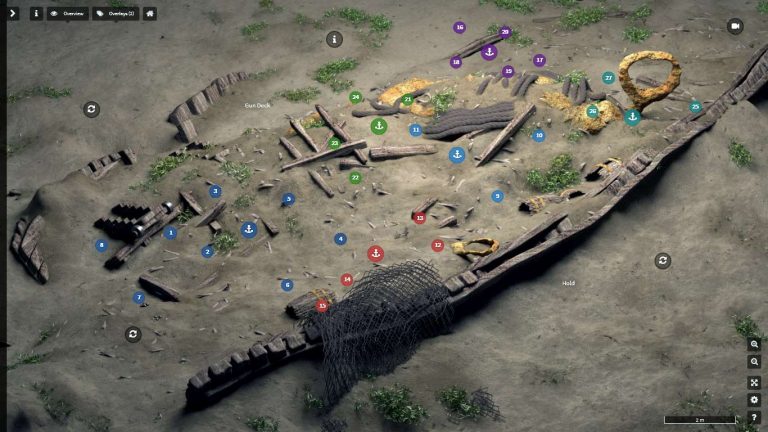Diving News
This time its subject is the protected site of the 17th-century warship London, one of England’s most important historic wrecks, which lies in two parts off Southend Pier in Essex.
HE commissioned London Cotswold Archaeology, again in collaboration with ArtasMedia, CyanSub and MSDS Marine, to create a 3D virtual tour of the well-preserved London, which is currently being monitored in difficult diving conditions.
The London blew up on 7 March, 1665, after gunpowder stores caught fire. The ship was heading from Chatham to the Hope near Gravesend in Kent to collect supplies before sailing to take part in the Second Anglo-Dutch War, and families of the crew were still on board.
More than 300 people died in the disaster, as recorded by diarist Samuel Pepys, who referred to around 24 survivors.
Since 2010 the site has been under investigation by the licensee Steve Ellis and his team, in collaboration with Cotswold Archaeology and previously Wessex Archaeology. The wreck was also excavated by HE in 2015 and a rare wooden gun carriage was recovered as well as more than 700 artefacts, some of which are displayed at Southend Museum.
“To date only a small number of divers have been able to explore the site,” said HE Maritime Archaeologist Alison James.
“The wreck is located in poor visibility right next to a shipping channel in a highly tidal environment, so not an easy or attractive place to dive. This virtual trail means that people can explore the site without even getting wet.”
“The diving conditions are so challenging that it’s a pleasure to be able to see the site on my computer screen, as can others,“ said Michael Walsh, Cotswold Archaeology’s senior marine archaeologist.
“I have to take my hat off to the licensee team, Steve and Carol Ellis, and Steve Meddle, for diving to monitor the site week in and week out. It is a huge commitment for which they should be congratulated.”
The new interactive website includes images, video, audio commentary and panoramas outlining the history of the ship, its loss and rediscovery, as well as the archaeological investigations conducted.
Sections provide details of the ship’s construction, weaponry and other equipment and personal items of the crew, plus details of the analysis and conservation of some of the rare items recovered.
Tour the London here.

